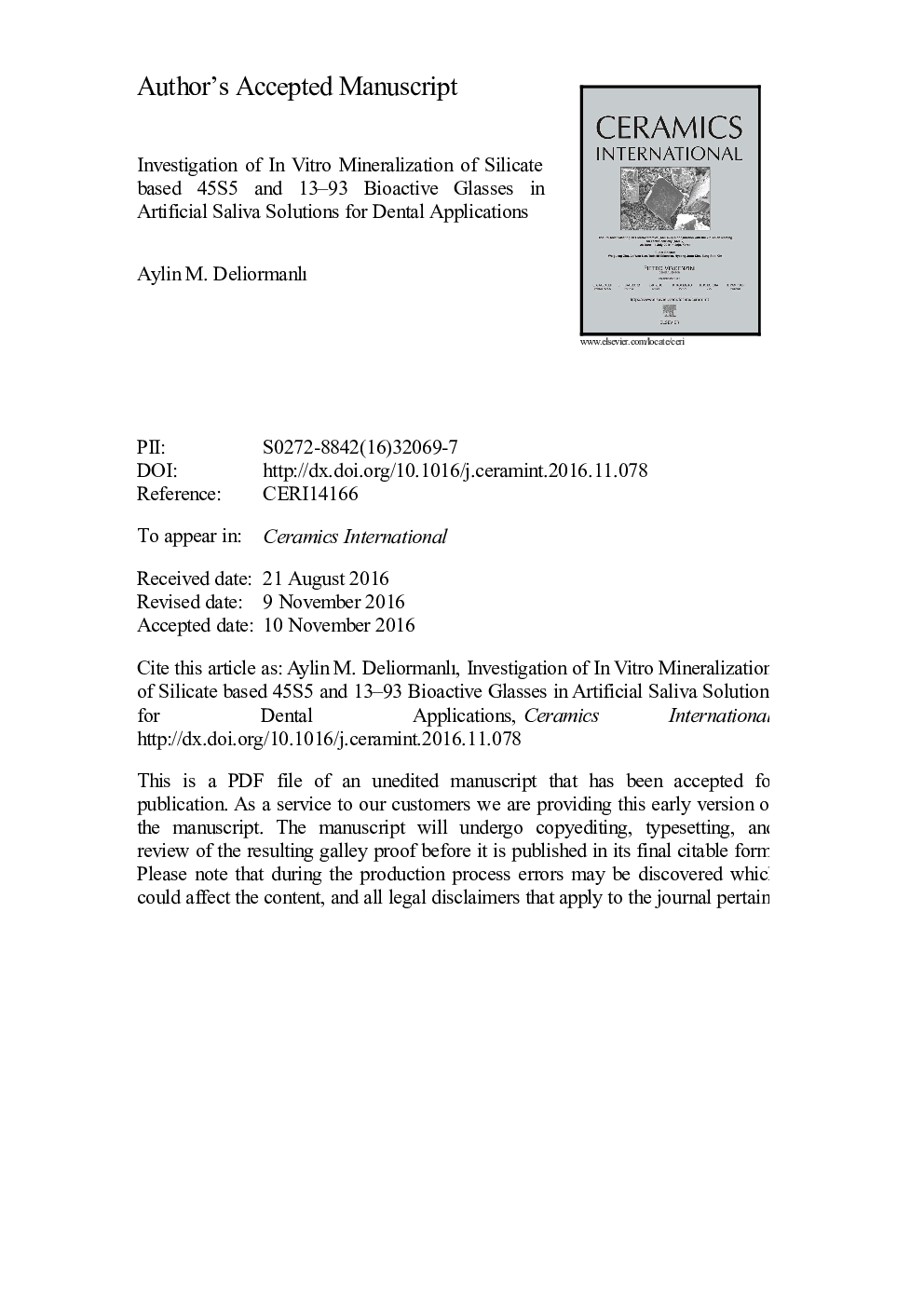| Article ID | Journal | Published Year | Pages | File Type |
|---|---|---|---|---|
| 5438898 | Ceramics International | 2017 | 32 Pages |
Abstract
Bioactive glasses are important class of materials that have a wide range of applications in tissue engineering and dentistry. In dental tissue engineering, nanofibrous structures exhibit interesting features, such as high surface area, surface functionalization and porosity. In this study, silicate-based 45S5 and 13-93 bioactive glass fibers were fabricated using electrospinning technique and their in vitro mineralization behavior was investigated in two different artificial saliva solutions for various time intervals. Results revealed that both 45S5 and 13-93 bioactive glass fibers show high mineralization behavior in artificial saliva solutions. However different hydroxyapatite (HA) formation rates were observed depending on the glass type and the artificial saliva composition. HA formation initiated earlier in 45S5 glass fibers treated in artificial saliva compared to 13-93 glass. On the other hand, after 30 days of treatment, the surface of 13-93 glass fibers converted to pure crystalline HA, whereas, 45S5 glass surface contained some additional crystalline phases such as aragonite and calcite. Treatment in SAGF medium resulted with better HA conversion ability compared to Carter-Brugirard saliva for both types of glass fibers. In conclusion, the use of electrospun nanofibrous 45S5 and 13-93 bioactive glass scaffolds could be one approach suitable to dental applications.
Related Topics
Physical Sciences and Engineering
Materials Science
Ceramics and Composites
Authors
Aylin M. Deliormanlı,
